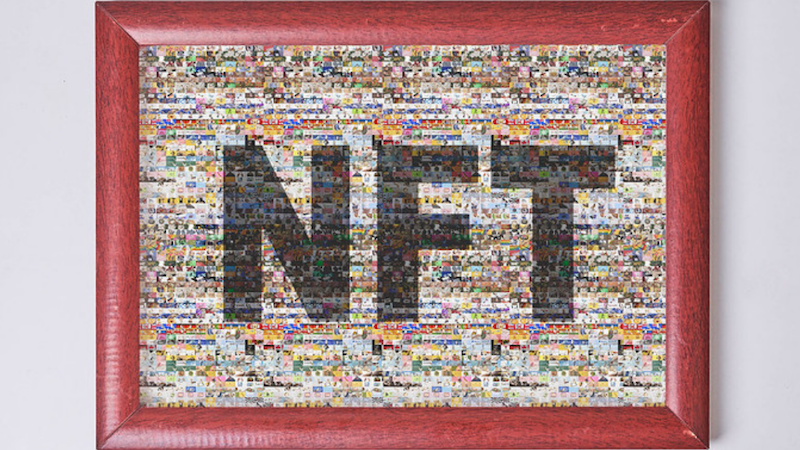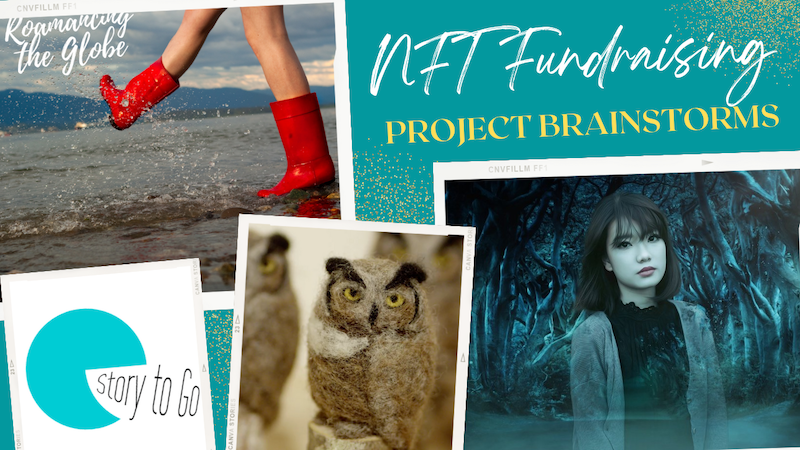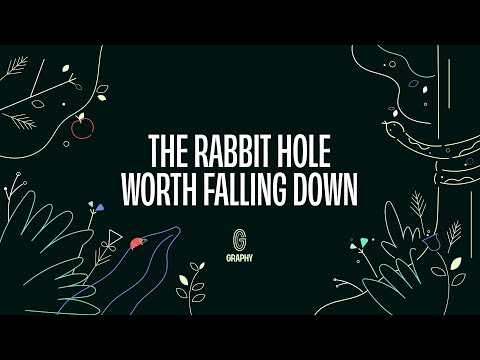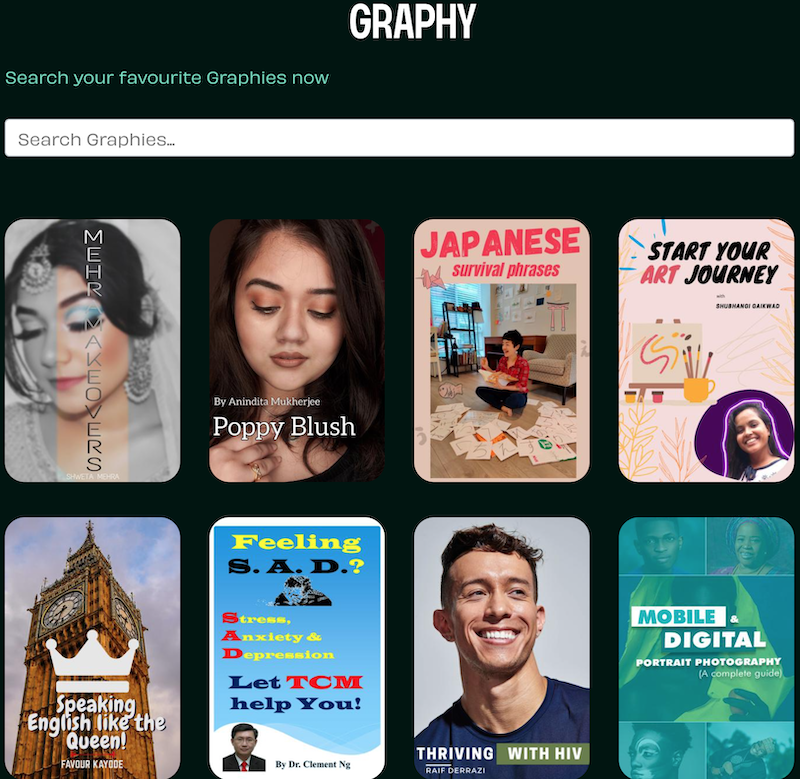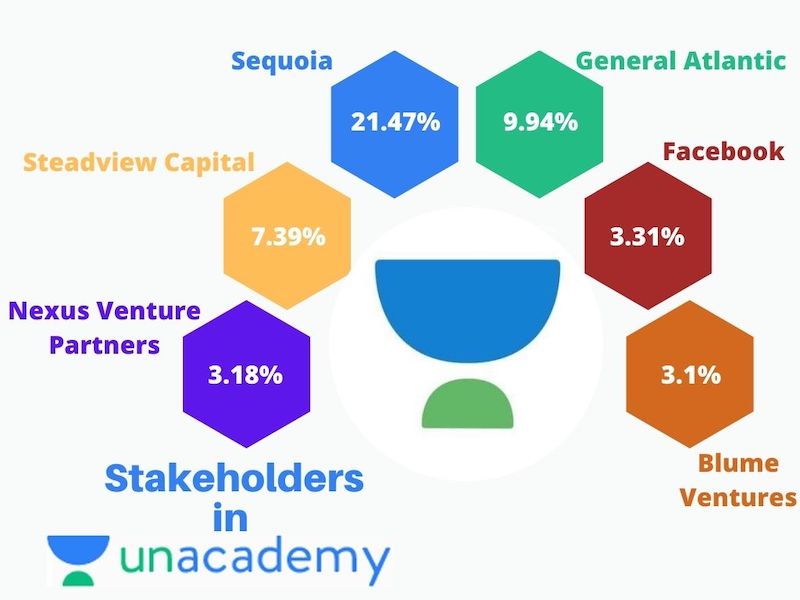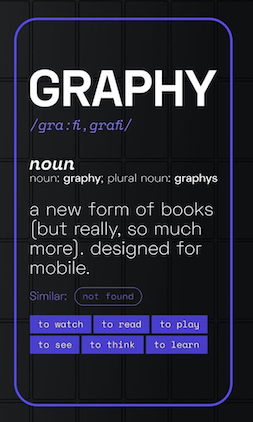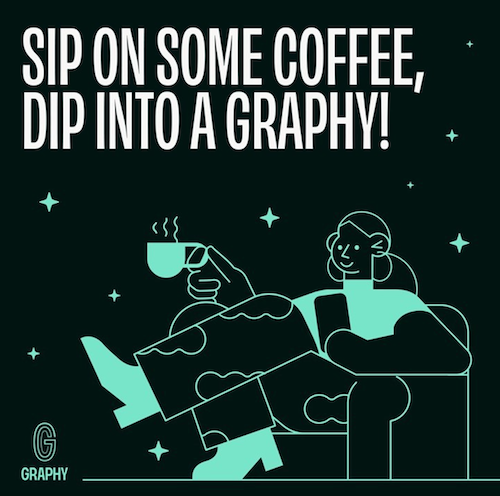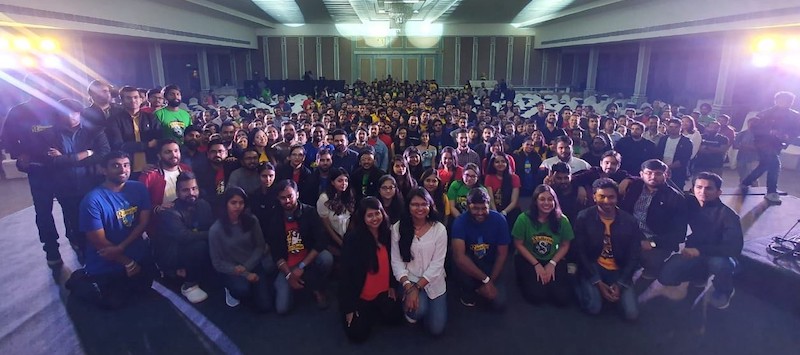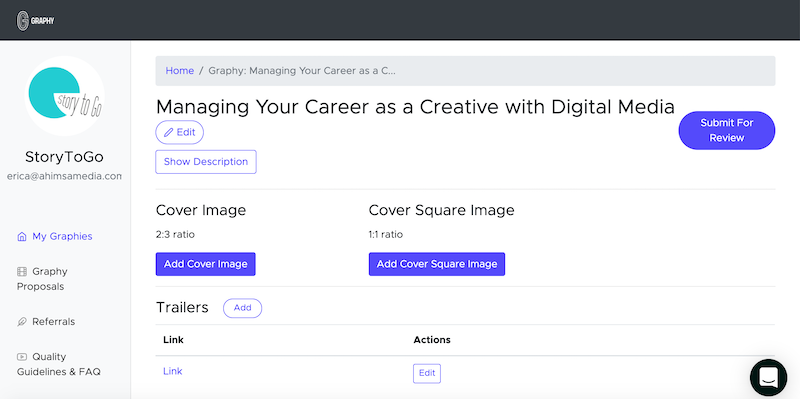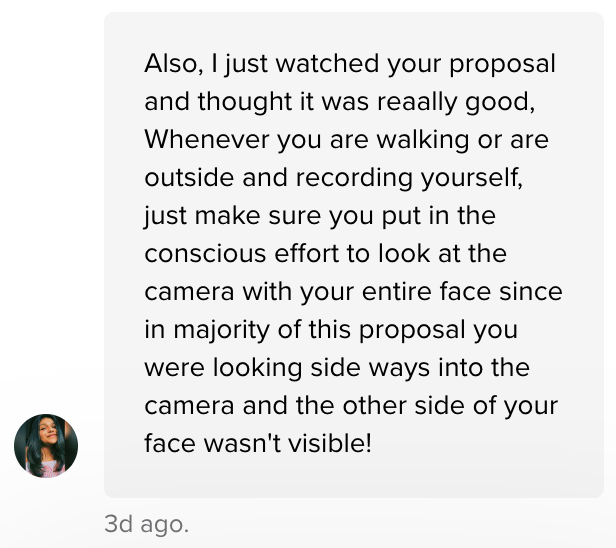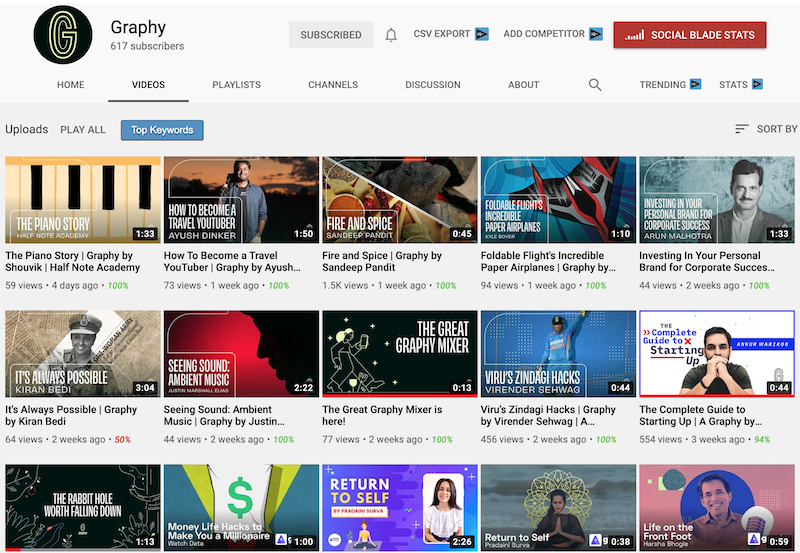Could NFTs (non-fungible tokens) poise a potential sustainable funding solution for open education and open culture?

This article was updated on October 22, 2021, thanks to some insights and explanations of Janos Farkas of CLink Media on the Web Monetization Community Forem.
Immersion in the Blockchain and Web 3.0
Over the past year as I’ve immersed myself in the Web Monetization Standard, I have become more and more excited about the potential that decentralization protocols, the blockchains, and cryptocurrencies hold in transforming the creator’s economy and building more equity for underserved groups across the digital verse. I am so very thankful to Grant for the Web and Interledger for starting me on this journey (along with a little nudge from David Porter).
With this and with the rise in popularity of NFTs within the artistic community, I have naturally become curious about exploring NFTs in greater depth to discover if they present a potential solution for the educational and storytelling projects that my team and I have been developing. While Web Monetization presents a solution for the royalties and sustainable management of our projects, could NFTs hold a solution for sustainably funding our projects, along with other open education and freely distributed cultural storytelling projects?
The Web Monetization Standard for those unfamiliar with it, is a JavaScript browser API that allows for the creation of a payment stream from a website visitor to a website. The way this currently works is that when someone with a Web Monetization subscription (currently Coil) visits a digital asset that is Web Monetized (like this digital magazine), then micropayments flow from the subscription to the digital asset in real time, based on the amount of time spent on the site.
To learn more about Web Monetization, visit our:
Understanding NFT
In gaining understanding of NFT and the potential that non-fungible tokens present, let’s first breakdown the word Non-Fungible Tokens.

Fungible
Fungible is a term used in finance to reference something that can be exchanged for something else that is the same, like a Canadian dollar or loony for another Canadian dollar or loony.
Non-Fungible
Non-Fungible refers to something that is unique, that can’t be replaced with something else. As an example of something that is non-fungible, since it’s a rainy day which brings cozy, comfy thoughts, my childhood yellow blanket that my mom made me is unique, as no other yellow blanket is the same as it. For me, it hold greater value to all those other yellow blankets.
Non-Fungible Tokens
This definition has been updated, thanks to insights and explanations shared by Janos Farkas of CLink Media.
Non-Fungible Tokens refers to non-fungible items that are tokenized. While with the current craze in NFTs, we think about tokenized items placed on the blockchain, tokens that are non-fungible have been used in commerce for centuries. As an example there include negotiable instruments, securities, deeds of real estate, certificate of title for automobiles.
“The term NFT was popularized in our current culture by the Ethereum ERC-721 Standard and is now used by other ledgers and marketplaces. The NFT itself is unique, but NOT the asset it is linked to. This has been the crux of major confusions around NFT.”
Blockchain
The Blockchain is a system of recording information in a way that makes it difficult, if not impossible to change, hack, or cheat. In essence it is a digital ledger of transactions that are duplicated and distributed across the entire network of computer systems on the blockchain.
NFT Success Stories
NFTs first gained more mainstream attraction and attention in 2017 as CryptoKitties (created by Vancouver’s Dapper Labs), took off. For those of you unfamiliar with CryptoKitties, it is a blockchain game on the Ethereum network that allows players to purchase, collect, breed and sell virtual cats.
CryptoKitties’ 2017 popularity congested the Ethereum network so badly that it caused the network to reach an all-time high in the number of transactions, slowing the network down significantly. In the years since then, while NFTs had a dedicated niche following, it wasn’t until 2020 that NFTs began to grow in popularity, perhaps as artists looked for different avenues and ways to sell their art during the pandemic. While popularity began to grow in 2020, 2021 has presented an enormous boom in NFTs and is changing the financial prospects for many artists.
I mention artists, as much of the NFT boom has been around art, along with collectibles. Creatives in multiple other disciplines have also begun to experiment with creating NFTs around their creative endeavours. The money that some artists are making is enough to not only maintain their projects, but fund new projects, pay for their education, donate some of their earnings to charities and causes of interest, and change their lifestyles. Below, I share a few projects that have caught my attention in my explorations.
Anatomical Hearts Project
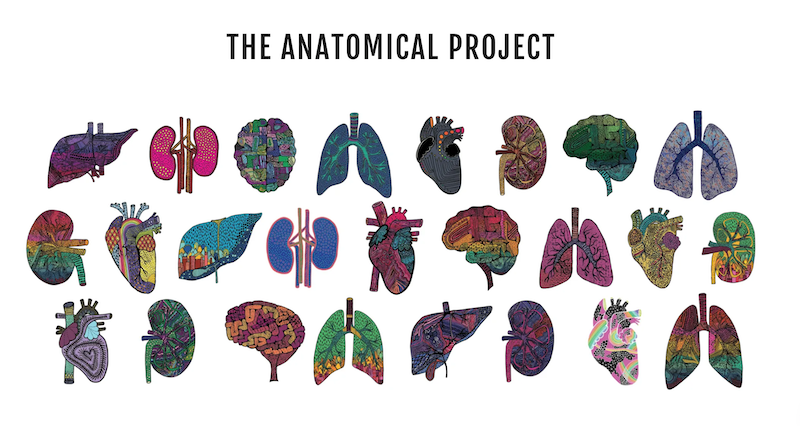
Melissa Freund began to draw anatomically correct hearts as a way of coping with and processing the rare heart defect that her daughter was born with and needed open heart surgery on at 11 days old. In May 2021, Melissa took these drawings and turned them into a published colouring book. Then in September 2021, she created a 100 piece NFT collection called Anatomical Hearts on the Open Sea NFT marketplace. Within a month, she sold 65 of those hearts, began to build a community around her art on discord, and earned 25 Ethereum, which is currently valued at approximately $96,900 US.
The hearts Melissa sells are essentially ‘digital prints’. The copyright for the drawings remain with her, so that she is able to use them in her other work. She also gets royalties on any future sales of her purchased hearts within the blockchain.
Melissa has now started a second project, The Anatomical Project.
Emotion Monsters
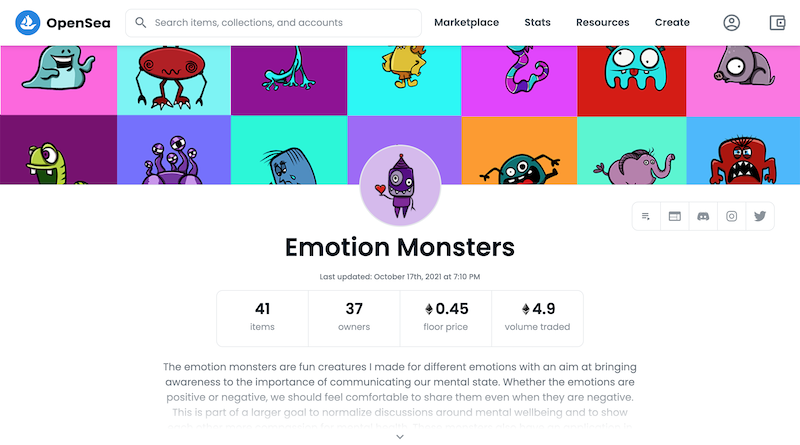
Emotion Monsters is an NFT project started by medical student Carmen Aguirre (also known as VJ Neurite), after being disturbed by her colleagues reactions to kids dealing with mental health issues in the hospital. With this series, she aims to break stigmas around mental health.
In the initial round of this project, she sold out on her first 30 monsters (in July 2021), and has since added additional monsters and emotional support pets for the monsters. As of writing this, she has earned 4.85 Ethereum, which at present is approximately $18,750 US. 10% of these earnings are donated to a mental health charity and the remainder is being used to fund a kids book on mental health
Each monster comes with access to a private discord group and will allow for derivative NFTs to be made from the original art.
Carmen has subsequently launched Emotional Support Plants on Open Sea.
Ethereum Towers
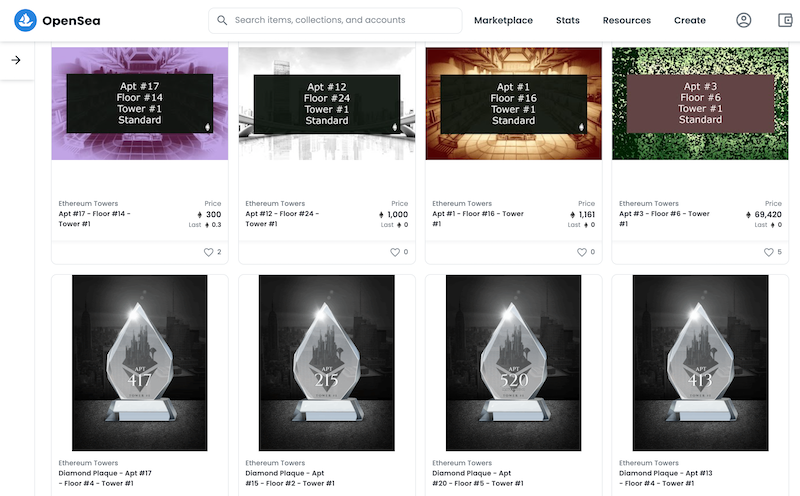
Ethereum Towers is a decentralized, community-first, social real-estate experiment in which space is being sold in a virtual world that will eventually exist in the metaverse. Think luxury virtual living, in the fashion of Second Life or Minecraft, as a way of bringing people from around the world virtually together in a shared virtual living space.
Launched in September 2021, at the time of writing this article, 425 Units of this virtual real estate have been sold, pulling in 88.5 Ethereum (which is currently approximately $340,000 US). This money will go into building the virtual towers in the metaverse, as well as managing the community.
Stoner Cats
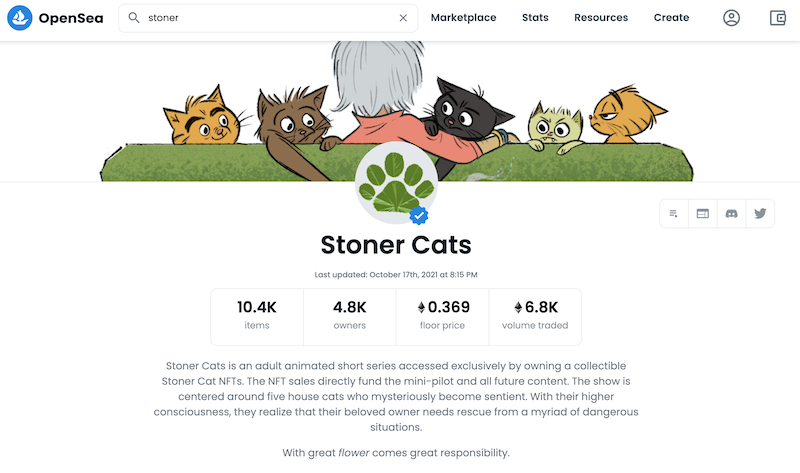
To raise money for a new animated series named Stoner Cats, Mila Kunis and Orchard Farm Productions ran an NFT Stoner Cat Collectibles sale, much in the fashion of a crowdfunding campaign with added perks for the first people to unlock particular milestones in the NFT sales. Everyone with a Stoner Cat collectible has exclusive access to all the Stoner Cat content produced.
The first round of sales was sold out to 4800 owners, raising 6800 Ethereum, which is currently approximately $26,180,00 US. To date, a 5-minute pilot for the series has been released.
My NFT Concerns
As I did a deep dive into the NFT ecosystem, there were a couple of points that raised my concerns with NFTs as well as with their practicality of use in creating free and open education and free and open culture. These concerns revolved around the notions of Ownership, Status, Copyright, and Equity. Many conversations around NFTs are focused on this notion of proof of ownership of something unique, and even go further to talk about this ownership over something acting as a point of status. All of this set my alarm bells off, as one of the strengths of the web for me is opening culture and education up to people worldwide. With a rise in popularity of NFTs would this transform the web into a series of gated communities in which only those that could afford to could enter, learn and experience? Part of what I love about Web Monetization and the people involved in creating that ecosystem is the movement towards making the web more equitable, and opening things up for underserved communities to earn. Yet when we talk Ownership and Status, this signals classism to me, which is counter to equity. This fear was further compiled by learning of an individual who gave away their choice of what to eat each day as an NFT and on a particular deep dive discovering HaremTokens. Also as a digital creator, did I want to be giving away my right to utilise my creations, when so often they build upon one another and come from a collective of ideas beyond just my own, especially in education?
To address some of these concerns, I hosted a panel of individuals experimenting with NFTs to discuss further, including Melissa Freund of the Anatomical Hearts Project, Dadcipher of Etherium Towers, and Adam Waring of gFam. You can listen to that podcast below on YouTube or the original version on Fireside Chat:
Smart Contracts
To summarise my discoveries from the discussion:
- While NFTs do show proof of ownership over something (in this case as Janos Farkas shared with me – the ownership is of the token not the asset itself), when an NFT is created a Smart Contract is established that dictates what the ownership of that item entitles the owner to. Usually that ownership does not involve the copyright of the asset, does not limit the artist’s other uses of the asset, and is often not even the original of the asset, rather a copy – just like owning the print of an original piece of art, allowing the artist to sell multiple prints of the same piece.
- The Smart Contract also stipulates how the buyer is permitted to utilise the item that they’ve purchased, and any other permissions that their purchase might give them.
- In addition, Smart Contracts can also stipulate percent royalties to be shared with the artist on all future sales of the item.
Our discussion covered other topics too, including how to get started on creating and selling NFTs, which I will go into further in another article, along with walking you through creating an NFT of our own. In the meantime, EdSurge has shared their journey in doing just that, that you can listen to below.
Janos Farkas went on to share with me, “When someone is purchasing an NFT, they are purchasing the metadata file, and as a non-fungible token this is transferable as well. Some people have therefore compared NFTs with a signed copy of a work, which is somewhat inaccurate as the NFT is not a copy itself, it’s more like a signed receipt of a work, where the ownership is not of the work itself, but it’s ownership of the receipt.” “The key takeaway from that paragraph ‘the ownership is not of the work itself’, so it is NOT a song, a book, a message, or a Tweet.” He further recommends reading ‘What do NFTs represent?’ section of the article, ‘The Rise of Non-Fungible Tokens (NFTs) and the Role of Copyright Law – Part I‘.
He further shares…
“This leads to the question: can an NFT represent the content/asset? For example, can it replace a certificate title of an automobile?
A certificate of title imprints the VIN (Vehicle Identification Number) of the automobile. VIN is unique to the vehicle and can be verified from third party sources. In other words, VIN provides a verifiable reference. This is not the case for the majority NFTs using Ethereum ERC721 tokens. Those link the content/asset by a “breakable” URL. There are multiple reasons why that URL is breakable. The most obvious one is that the ERC721 spec allows changing the URL after the token is minted by the function (_setTokenURI(tokenId, newTokenURI). See github.com/0xcert/ethereum-erc721/… at line 110 in the ERC 721 reference implementation.
In summary NFT cannot be considered as a verifiable ‘certificate of ownership’ for a content/asset.”
The Possibilities for NFTs are Evolving Quickly
Another thing I learned this past week from tuning into NFTcon (Day 1 – Music, Art, Fashion & Culture / Day 2 – Collectibles, Gaming, Sports & Metaverse / Day 3 – Protocols & Demos) and having the discussion above, as well as conversations with other NFT creators, is that the NFT ecosystem is changing rapidly, and with that there are many misconceptions (like those I had around what ownership means and what unique means in the context of NFTs) and opportunities to shape how NFTs evolve. In terms of NFT evolution, there are already conversations around NFT rentals or examples of NFTs as tickets to an event. In some cases, owning an NFT is like owning a key that unlocks different experiences. There are huge opportunities in contributing to this evolution by experimenting with the creation of your own NFTs, especially in spaces beyond art and collectibles.
Opportunities for Creating NFTs for Open Education & Open Culture Projects
I struggled initially in pondering whether with the notion of ownership, if it would be possible to create NFTs around Open Education and Open Culture Projects, and then as I continued popping down various NFT rabbit holes and exploring what others were up to, the ideas rapidly began to hit me.
Here are my initial thoughts on how NFTs could be utilised around open education and open or free culture projects to begin to create sustainable funding models for those project:
- Completion Certificates for Open Courses, that are available at a fee, provided the learner also completes the required assignments. This NFT Completion Certificate could also include feedback from the Instructor on the assignments and a one-on-one coaching session.
- Fundraising Collectibles that unlock special privileges, like access to the behind-the-scenes community or voting rights in future resource development.
- Creation of NFTs around Secondary Resources built as a part of the open education project.
- Creation of NFTs around Learnings that you have had as a result open education project.
While the above is just a start, my hope is that you, dear reader, will add to these ideas, growing the possibilities.
In terms of how I am envisioning utilising NFTs to help our team to continue to grow our open educational and freely accessible storytelling projects, here are a few of my current ideas:
StoryToGo Classroom
What? Online Course Site
NFTs?
- Completion Certificates for Open Courses, provided the learner also completes the required assignments. This NFT Completion Certificate will also include feedback from the Instructor on the assignments and a one-on-one coaching session.
Chronic Pain Chronicles
What? Web Series, Documentary, and Open Educational Resources on Chronic Pain and Chronic Pain Management
NFTs?
- Chronic Pain Chronicles Character Collectibles with the purchasers of the characters having full and advanced access to the web series, documentary, and educational resources, in addition to access to the behind-the-scenes discord community where they can have direct access to our team and contribute to development discussions. Proceeds from the characters will go to the development and production of the series, documentary, and educational resources, with a percent going to chronic pain research and programs, and in royalties to the artist.
- Chronic Pain Chronicles Digital Art Gallery of art created by individuals with chronic pain, with the majority of the sales going to the artist, and a smaller percent of sales going to the series and to chronic pain research and programs.
Naturally Ours
What? Web Series, Documentaries, and Online Parks and Education Guides
NFTs?
- Flora and Fauna Character Collectibles with the purchasers of the characters having full and advanced access to the web series, documentary, and parks and education guides, in addition to access to the behind-the-scenes discord community where they can have direct access to our team and contribute to development discussions. Proceeds from the characters will go to the development and production of the series, documentary, and parks and education guides, with a percent going to a conservation charity, and in royalties to the artist. Character dumps will be tailored to the flora and fauna native to upcoming Seasons of the Series.
- Digital Prints of Stock Photos and Videos from filming.
- Travel and Hiking eBook Guides
- Teaching eBook Guides
Story Steppers AR Natural and Cultural Storytelling App
What? AR Natural and Culture History Experiences and Online Educational Resources
NFTs?
- Ghostly Figures Character Collectibles tied to upcoming experiences with the purchasers of the characters having access to hidden AR experiences that are unlocked by their character, in addition to access to the behind-the-scenes discord community where they can have direct access to our team and contribute to development discussions. Proceeds from the characters will go to the development and production of the AR experiences and online educational resources, with a percent going to a charity tied to the experience being built, and in royalties to the artist.
- Digital Prints of Stock Photos and Videos from filming.
- Travel and Hiking eBook Guides
- Teaching eBook Guides
Roamancing Travel Magazine
What? Digital Travel and Culture Magazine and Storyworld
NFTs?
- Digital Prints of Stock Photos and Videos from our travels.
- Travel eBook Guides
Your Thoughts?
Now it is your turn. Have you been experimenting with NFTs? If so, what has your experience been? Do you have ideas for utilising NFTs on a project of your own? Do you have other insights on how NFTs can be utilised in sustainably funding open education and freely accessible cultural projects?
Share your thoughts in the comments below.

A Few of the Rabbit Holes I Wandered Down in my NFT Research
Aguirre, C. (2021, September 5). Emotion Monsters. VJ Neurite. Retrieved October 16, 2021, from https://www.vjneurite.com/crypto-art/emotion-monsters
Burke, K. (2021). The Metaverse Podcast. PodBean. Retrieved October 14, 2021, from https://outlierventures.podbean.com/
CryptoKitties. (2019, November 19). In Wikipedia. https://en.wikipedia.org/wiki/CryptoKitties
Easy Peasy Finance. (2021, June 8). Finance 101: What are NFTs or Non-Fungible Tokens? Easy Peasy Finance for Kids and Beginners [Video]. YouTube. https://www.youtube.com/watch?v=szxilXB1POI
Freund, M. (2021). The Anatomical Project. The Anatomical Project. Retrieved October 13, 2021, from https://theanatomicalproject.com/
Hargreave, E. (2021, October 13). Would Love Your Advice on Navigating the World of NFTs [Forem Post]. Web Monetization Community. https://community.webmonetization.org/ericahargreave/where-on-navigating-the-world-of-nfts-4b9c
Hargreave, E. (2021b, October 14). Exploring NFTs on the Sustainable Funding Series | by Erica Hargreave. Fireside Chat. Retrieved October 14, 2021, from https://firesidechat.com/ericahargreave/01FJ00CYXG1E86WEY707NSYRFJ
Hargreave, E. (2021c, October 18). NFTs – A Sustainable Funding Solution for OpenEd? | by Erica Hargreave. Fireside Chat. Retrieved October 18, 2021, from https://firesidechat.com/ericahargreave/01FJAC39R96M8XQ91Z52TF4EEB
Jackson, R. (2021, August 25). NFTs Are Here To Stay, Dominate And. . . Crunchbase News. Retrieved October 13, 2021, from https://news.crunchbase.com/news/nft-outlook-2021/
Kastrenakes, J. (2021, March 11). Beeple sold an NFT for $69 million. The Verge. Retrieved October 16, 2021, from https://www.theverge.com/2021/3/11/22325054/beeple-christies-nft-sale-cost-everydays-69-million
NFTCON October 12–14th – NFT Conference. (2021). NFTcon. Retrieved October 14, 2021, from https://www.nftcon.co/agenda
NFTs – What You Need to Know. (2021, July 28). Real Vision. Retrieved October 13, 2021, from https://www.realvision.com/nfts-what-you-need-to-know
Open Sea. (n.d.). Open Sea. Retrieved October 13, 2021, from https://opensea.io/
Radhy. (2021, October 16). Web Monetization + NFT = . . . ? [Forem Post]. Web Monetization Community. https://community.webmonetization.org/radhyr/web-monetization-nft-5hbg
Stoner Cats. (2021). Stoner Cats. Retrieved October 16, 2021, from https://www.stonercats.com/
Studyum Foundation [STUDYUM]. (2021, July 2). Applying Non-fungible tokens (NFTs) in education [Video]. YouTube. https://www.youtube.com/watch?v=SkQKgOyKfI0
Tan, E. (2021, October 8). NFT Rentals: Why VCs Are Backing a Puzzling New Project. CoinDesk. Retrieved October 13, 2021, from https://www.coindesk.com/tech/2021/10/08/nft-rentals-why-vcs-are-backing-a-puzzling-new-project/
Thomas, P. (2021, August 20). NFTs in education — fashion, fad or truly non-fungible? Medium. Retrieved October 16, 2021, from https://medium.com/haileyburyx/nfts-in-education-fashion-fad-or-truly-non-fungible-252a662d4bce
Vaynerchuk, G. (2021, May 13). What is NFT? Non-fungible Token Guide. GaryVaynerchuk.Com. Retrieved October 14, 2021, from https://www.garyvaynerchuk.com/what-is-nft-non-fungible-token-guide/
Young, J. R. (2021a, August 18). Could NFTs Play a Role in Education? EdSurge. Retrieved October 16, 2021, from https://www.edsurge.com/news/2021-08-10-could-nfts-play-a-role-in-education
Young, J. R. (2021a, September 15). Glitches, ‘Gas Fees’ and Lessons We Learned Selling an NFT. EdSurge. Retrieved October 16, 2021, from https://www.edsurge.com/news/2021-09-14-glitches-gas-fees-and-lessons-we-learned-selling-an-nft
Young, J. R. (2021, October 12). We Wondered If NFTs Could Change Education, So We Decided to Sell This Article on the Blockchain. EdSurge. Retrieved October 16, 2021, from https://www.edsurge.com/news/2021-08-09-we-wondered-if-nfts-could-change-education-so-we-decided-to-sell-this-article-on-the-blockchain
